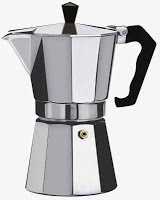Electrolux.
2012. Happy Birthday AEG: ‘Perfekt in Form und Funktion’ for 125 Years.
[ONLINE] Available at:
http://newsroom.electrolux.com/uk/2012/05/22/happy-birthday-aeg-%E2%80%98perfekt-in-form-und-funktion%E2%80%99-for-125-years/.
[Accessed 26 January 14].
Peter
Behrens is one of the most outstanding 20th century designers. His designs and
work in painting, architecture, graphic design and industrial design have been
an influence in all of those fields. He is typically viewed as the founder of
both modern, industrial architecture and also industrial design. Originally in
the late 19th century he was a founding member of the Munich succession.
He
has produced everything from coloured illustrations, book designs, crafts to
furniture and even architectural designing. His first design in architecture
was his own first house and was called a work of Art in his own country of
Germany. Behrens, apart from designing the actual house, he also designed the
interior and all the furnishings. The first commission he received was from
AEG, an electrical product company in Germany. From originally being
commissioned to design their advertising material, he ended up designing their
factory building and also their original electrical products.
art
directory. no date. Peter Behrens. [ONLINE] Available at:
http://www.behrens-peter.com/. [Accessed 26 January 14].
Electric
Kettle by Peter Behrens
The
AEG factory was designed using geometric shapes; even the company's logo followed
the form of the same geometric shape. The company was so pleased with the
simplicity of the shape, that they decided to unite this shape with everything
they made. As electric kettles had appeared in the late 19th century, they were
still relatively expensive so AEG tried to produce their own design. Peter Behrens designed the kettle in 1909,
again using the octagonal, geometric shape that he had used for the factory's
roof and logo. The kettle looked very modern using the function over beauty
factor.
Even though it was still a bit expensive, small, and slow to heat water,
it was made using high quality materials and so it was a popular product with
the consumer.
Blogger.
2011. Art Nouveau: Peter Behrens and the corporate type design. [ONLINE]
Available at:
http://abdulazizfarache.blogspot.com/2011/03/art-nouveau-peter-behrens-and-corporate.html.
[Accessed 26 January 14].
MoMA.
2011. the new kitchen. [ONLINE] Available at:
http://www.moma.org/interactives/exhibitions/2010/counter_space/the_new_kitchen.
[Accessed 26 January 14].
The
Aluminium Espresso Coffee maker
The
geometric, octagonal shape created by Peter Behrens has remained very popular
till this day. It has influenced the design of many household products as can
be seen in the picture above.
Blogger.
2012. Marylou's news. [ONLINE] Available at:
http://meaghangibbons.blogspot.com/2012/04/marylous-news.html. [Accessed 26
January 14].










